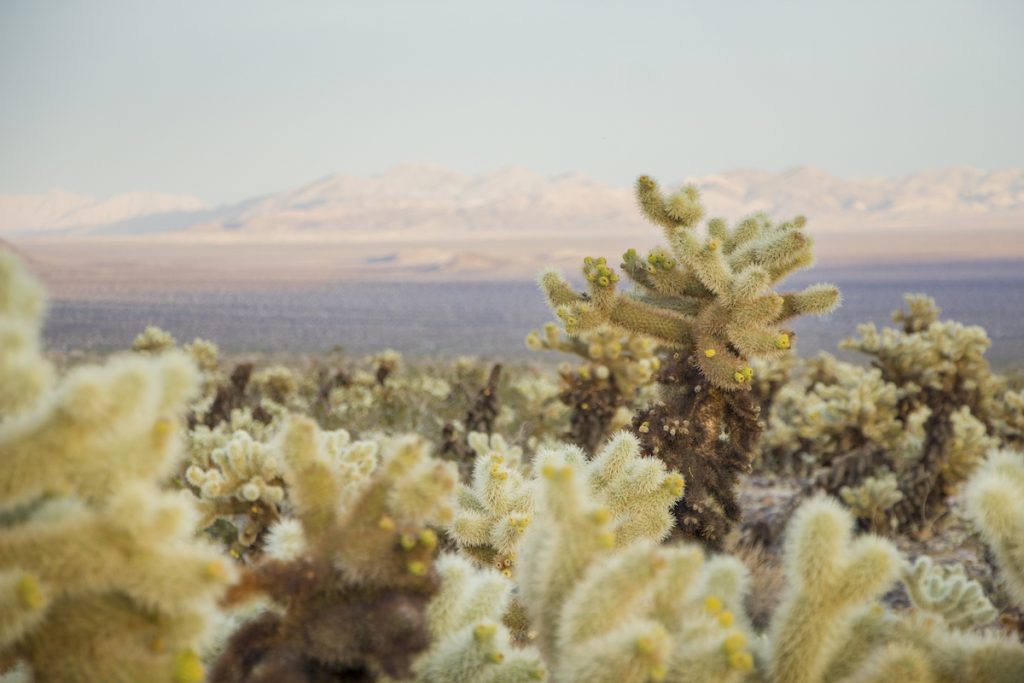The Cholla cactus is a dastardly plant that thrives in deserts across North America. This cactus has adapted to several different arid elevations and locales throughout North America and ranges from one to 15 feet tall, depending on the species. Some live in mountain forests and others in dry, rocky flats or slopes.
While there are more than 20 species of cholla in the Opuntia genus, the more infamous species is the Teddy Bear Cholla, or Jumping Cholla (Cylindropuntia bigelovii), which can be found in Mexico, Arizona, Nevada, and California.
The cactus’ short, fuzzy branches were thought to resemble cute little Teddy Bear arms from a distance. Upon closer inspection, the plant is more like the Teddy Bear of Death. Those fuzzy arms are actually covered with a thick coat of spines that seem to have a magical ability for sticking to everything.
This shrub-like cactus has segmented cylindrical stems, rather than pads like most cacti, that easily disconnect at each segment. Since the segment is covered in spines, it can quickly latch on to any passing animal or can even be blown off the plant in a strong wind.
Dead stems can be found littering the area several feet away from the parent cactus. These zombie stems are the ones that usually attach themselves to your shoes, socks, pant legs, and even between your dog’s foot pads.
In addition to torturing hikers, the cholla cactus spines serve several functions. They protect the plant from being eaten and also aid in water collection. The spine’s primary purpose, however, is reproduction. The cholla cactus excels in getting its stem segments latched onto any passing critter.
What makes the cholla cactus spine a literal pain is its overlapping barbs which are similar to a porcupine’s quill. The barbed spine functions like a razor-sharp blade that easily punctures skin going in but is hard to pull out because the spine catches on the victim’s muscle fibers. Once stuck, the cholla cactus segment breaks off and is given a free ride to a new location where it will begin growing as a new plant.
Desert pack rats use this feature for home defense. The small rodents roll the dead stems in front of their burrow entrances to protect them from foxes and coyotes.
If you find a cholla stem sticking to you, whip out a multitool and gently pull it off with the pliers. You can also place a plastic comb between the segment and your skin to flick the cactus away. Any remaining tiny spines can be removed with tweezers or duct tape.
The cholla cactus has orange or yellow flowers that bloom from April through June. The fruit, which is usually sterile, is about one inch in diameter and will often have spines.
Indigenous tribes like the Tohono O’odham in the Sonoran Desert would harvest the cholla flower buds as a food source. Once de-spined, the buds would be dried, roasted, or eaten raw. Cholla cactus buds are high in calcium and soluble fibers and would often be a staple food source for nursing mothers and the elderly.
Considering their nickname jumping cactus we think they should be given a wide berth and best admired at a distance, preferably through a telescope!
